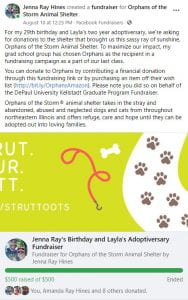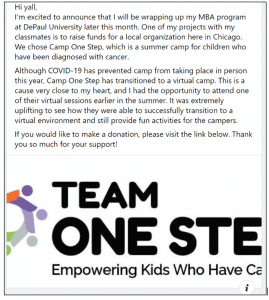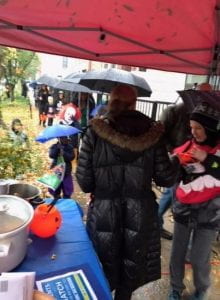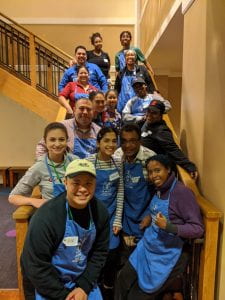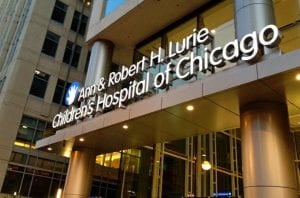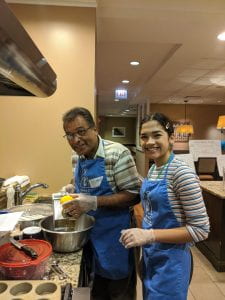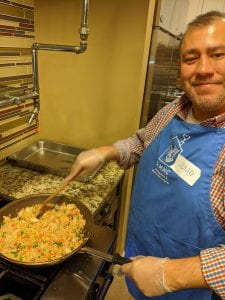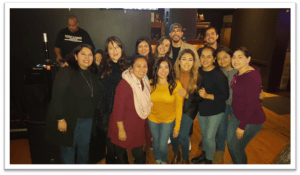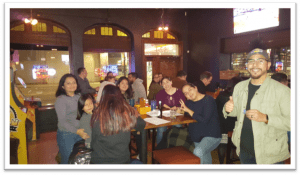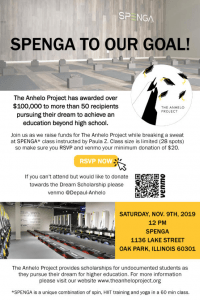Project Title: Virtual Back To School Drive – Supporting Children First Fund
1. Description of the Project
-
- For our project, we teamed-up with the Children First Fund to support Chicago Public Schools through a virtual back to school drive. Given the implications of COVID-19, our ability to host in-person events or fundraisers were limited, which forced us to think outside of the box. We decided to create a social campaign leveraging the hashtag #throwbacktoschoolfund across multiple social media platforms. We each dug-up school aged pictures of ourselves and posted them, along with a donation link and our hashtag, and encouraged our followers to participate in the campaign by donating and posting their own throw-back picture on their respective social media accounts. Additionally, two group members created a flyer with the important information and their throw-back pictures and sent it via email to their department at work. The other two group members leveraged their work Slack channels to encourage participation within their respective areas. We coordinated with the Children First Fund to create our donation portal (Network for Good), which provided clear and consistent tracking throughout the two weeks our campaign was active. The ultimate goal of our project was to raise funds for Chicago Public Schools, increase awareness of the Children First Fund and all of the incredible work they are doing, and have fun along the way!
2. Description of the Charity
-
- Children First Fund (childrenfirstfund.org), part of the Chicago Public School Foundation, is an incredible charity seeks to support children within the CPS system in meaningful ways that go far beyond school supplies. They work to secure scholarships in an effort ensure that no student is denied a college education due to lack of financial means. They promote culturally relevant reading by raising funds to put books in the hands of students across the city. They provide district programs such as student wellness, success in career and life, equal access, and academic excellence. And they partner with individuals and corporations all over the world to provide supplies, technology, and other necessities to ensure success in and out of the classroom.
- Children First Fund’s mission is to promote the growth and success of Chicago Public Schools through philanthropy and partnerships. We serve as a knowledge hub and liaison between CPS and its community of partners, including businesses, foundations, and individuals. By matching resources provided by external donors and partners with the students, schools, and staff that need them most, CFF maximizes the impact of CPS’ partnerships and advances the CPS Vision.
3. Factual Analysis of Success
- Our success criteria were broken-up into three categories, Donation Value, Awareness, and Education.
- Donation Value: At the end of our campaign, we met our success criteria and raised a total of $1,355 (which includes a later match of $150 provided by our employer) for Children First Fund. Our base success goal was set at $750 and our stretch goal was $1,500.
- Awareness: Our goal was to raise awareness of Children First Fund by reaching at least 500 people. While we were ultimately unable to track our total reach, we are confident that we exceeded this goal when taking into account our social media posts, Slack channel messages, and emails to our departments.
- Education: Our last success criteria was to learn the fundamentals of project management throughout the planning and execution of this fundraising campaign. I can confidently say we achieved this!
4. Lessons Learned
-
- Communication is Critical: Arguably the #1 most important aspect of Project Management is open, clear, and continuous communication. It is absolutely critical to identify your key stakeholders across all functions of the project and establish reoccurring communication that ensures all stakeholders feel aware of current status. Without this open dialogue, you will inevitably run into issues that could cause delays or larger problems. Assigning a person to be in charge of communication at the start of the project is recommended.
- Time Management: While two months might seem like a long time, it goes by in a blink of an eye. Leveraging sound time management skills is very important to ensure all deliverables and aspects of the project are completed timely. One delay of a critical deliverable may start an avalanche of delays which will increase stress and cause strain on your project. Ensure your team is organized, has established a clear Work Breakdown Structure and Milestone Schedule and works diligently to correct any delays as quickly as possible.
5. Advice for Future Teams
-
- The first piece of advice we have for future teams is to hold each other accountable for specific deliverables. Everyone is busy juggling many things at once and it can be easy to put off deliverables for this project. By doing this, you’re setting your team up for major stress. Create your Work Breakdown Structure and Milestone Schedule and ensure that everyone is committed to staying on track!
- The second piece of advice is to always think outside of the box. When tasked with a project such as this, it’s easy to land on the first idea that comes to mind. However, there are likely much better options out there if you spend the time and energy brainstorming. Don’t settle for ordinary when you can create something extraordinary!
6. Photos of Project




